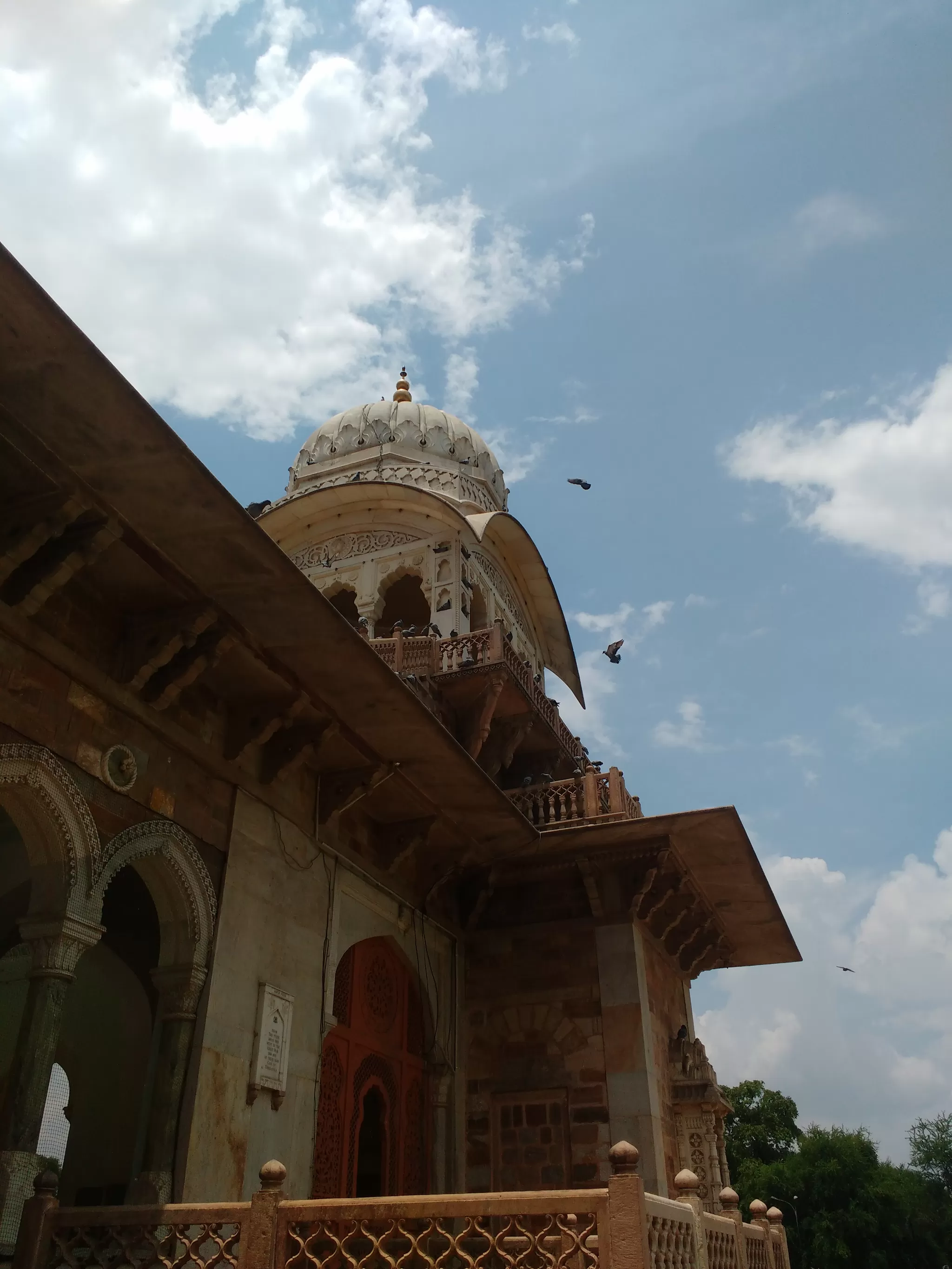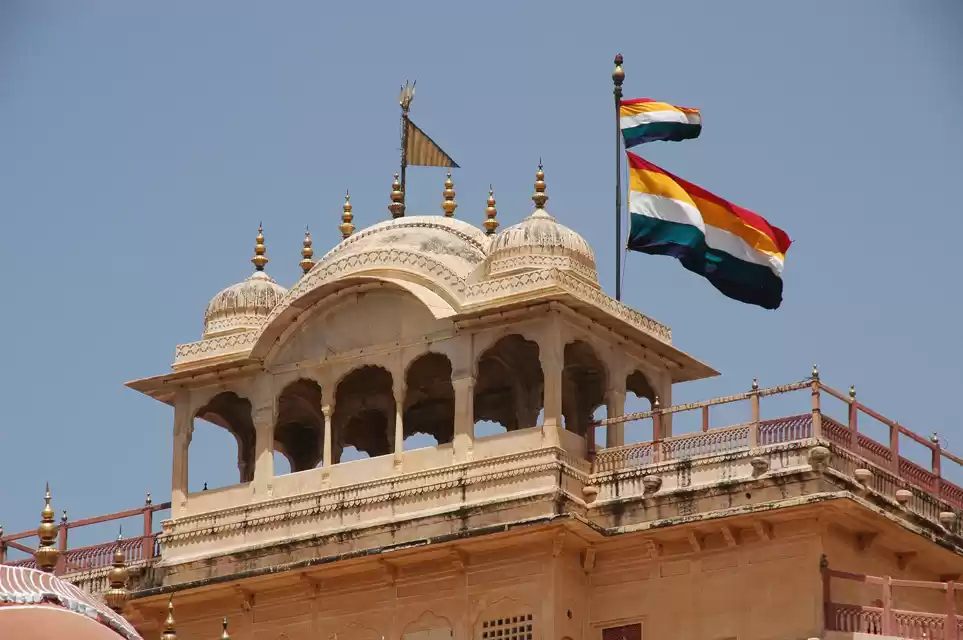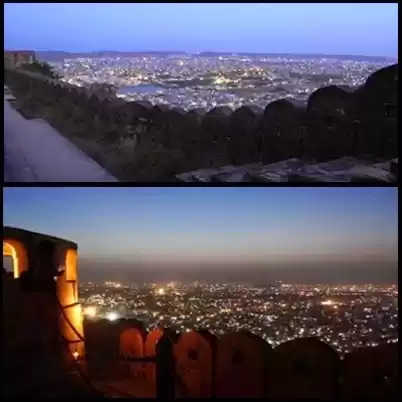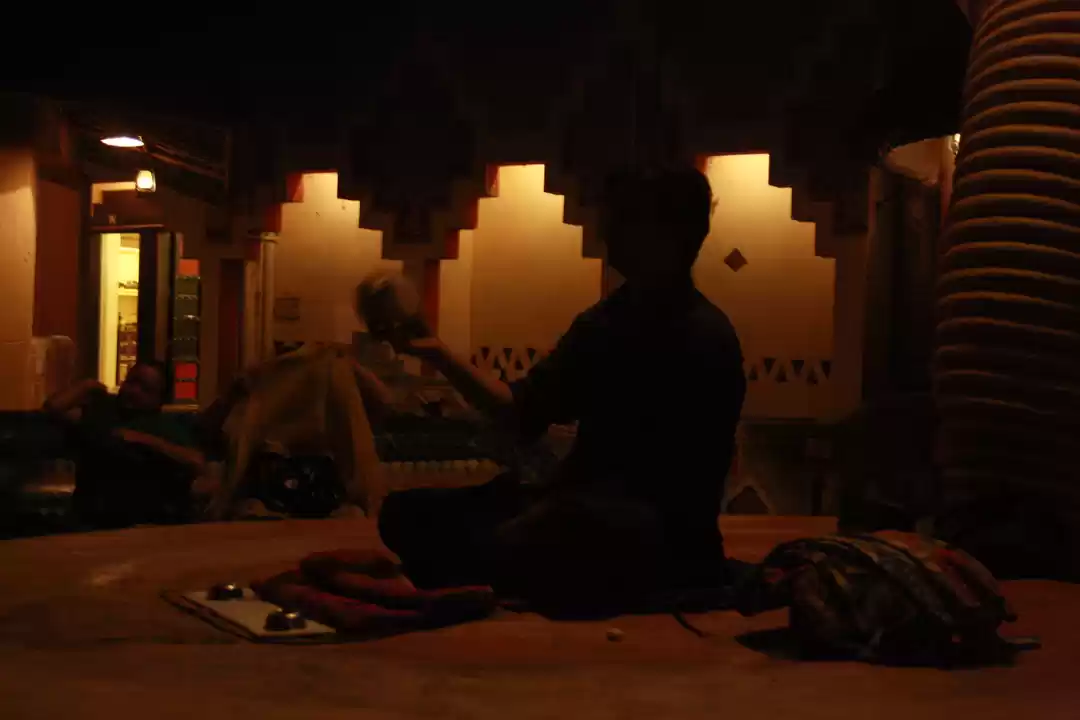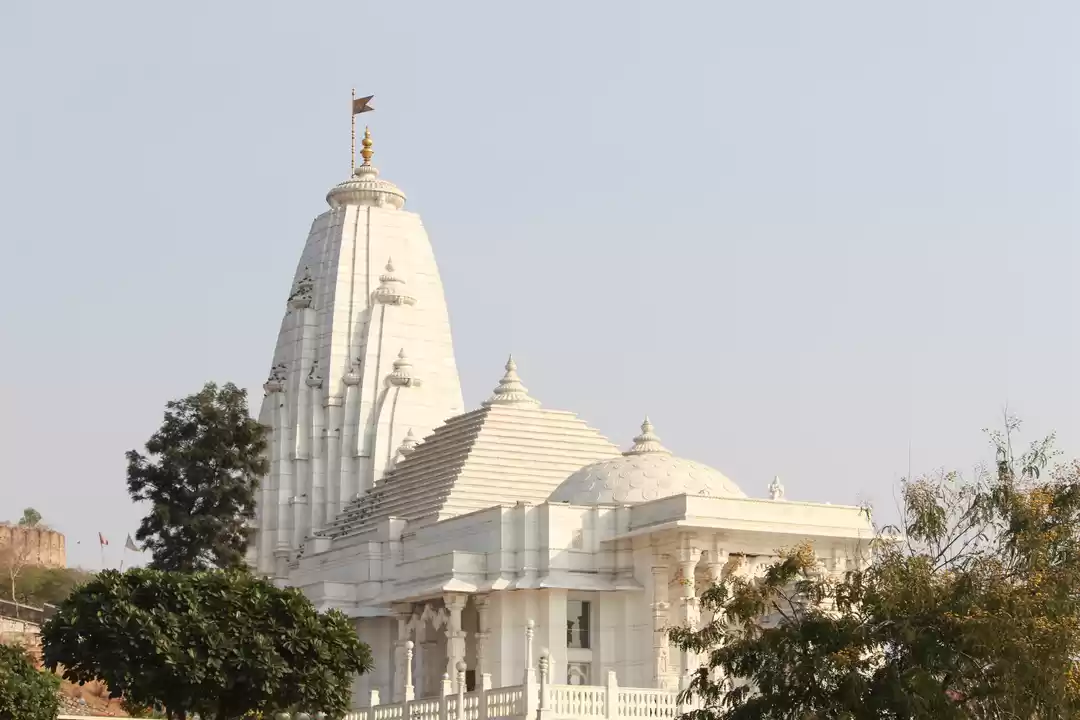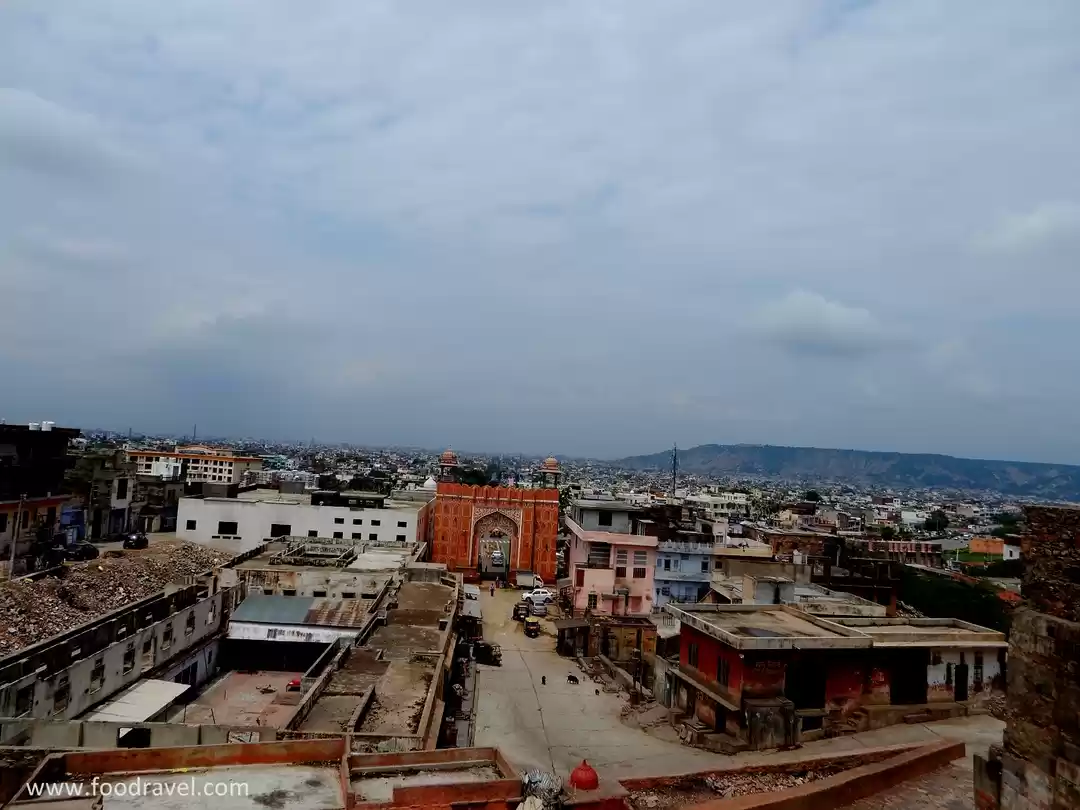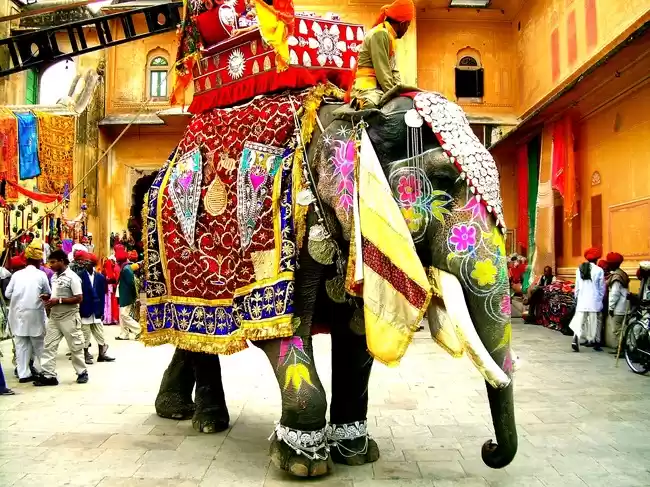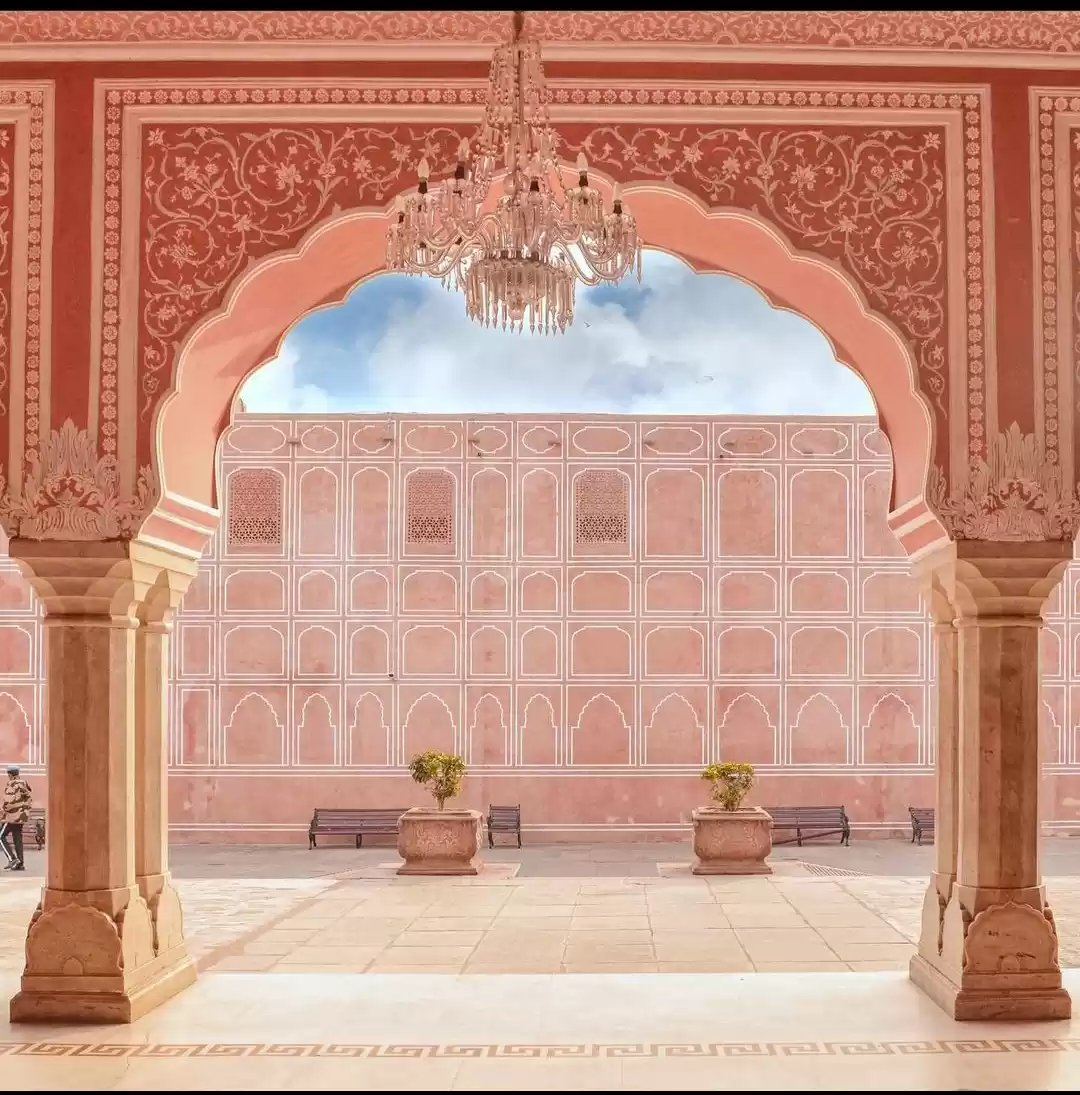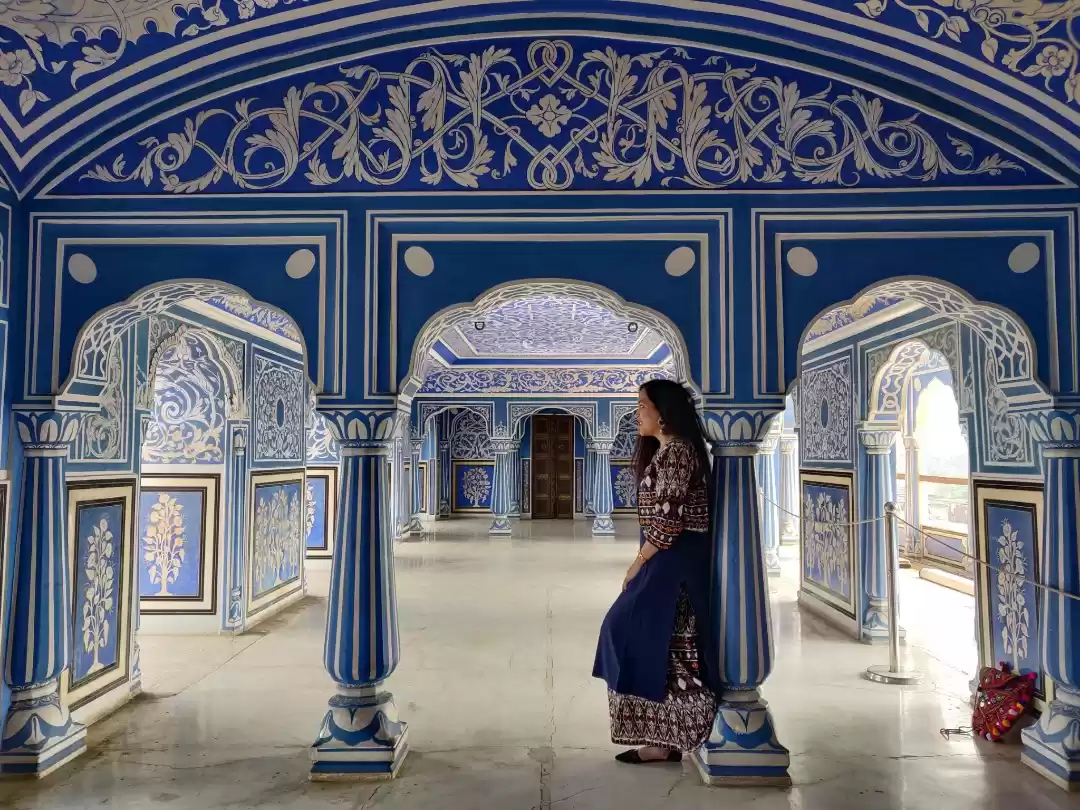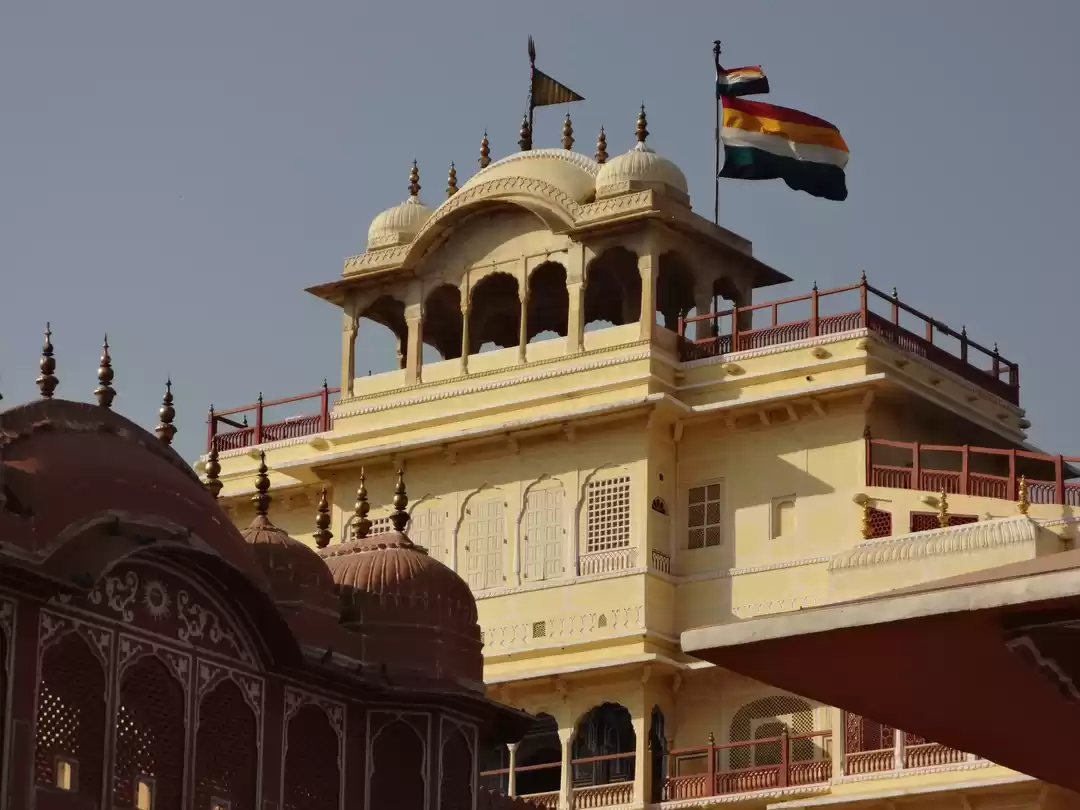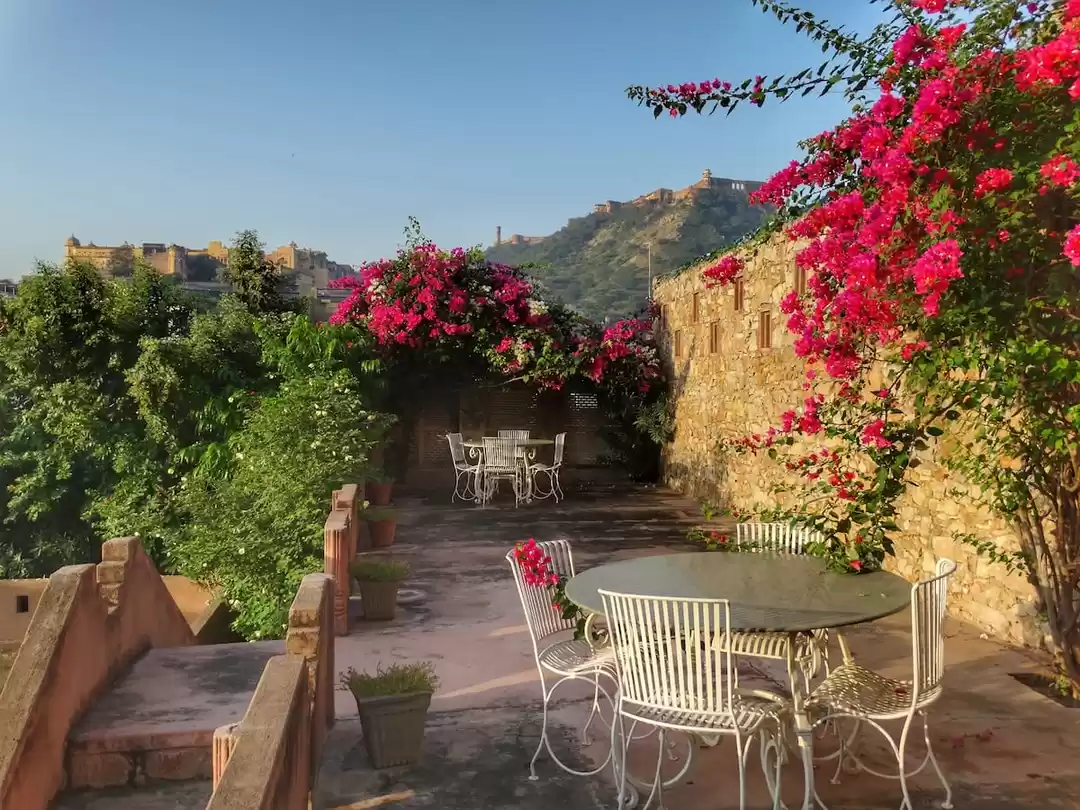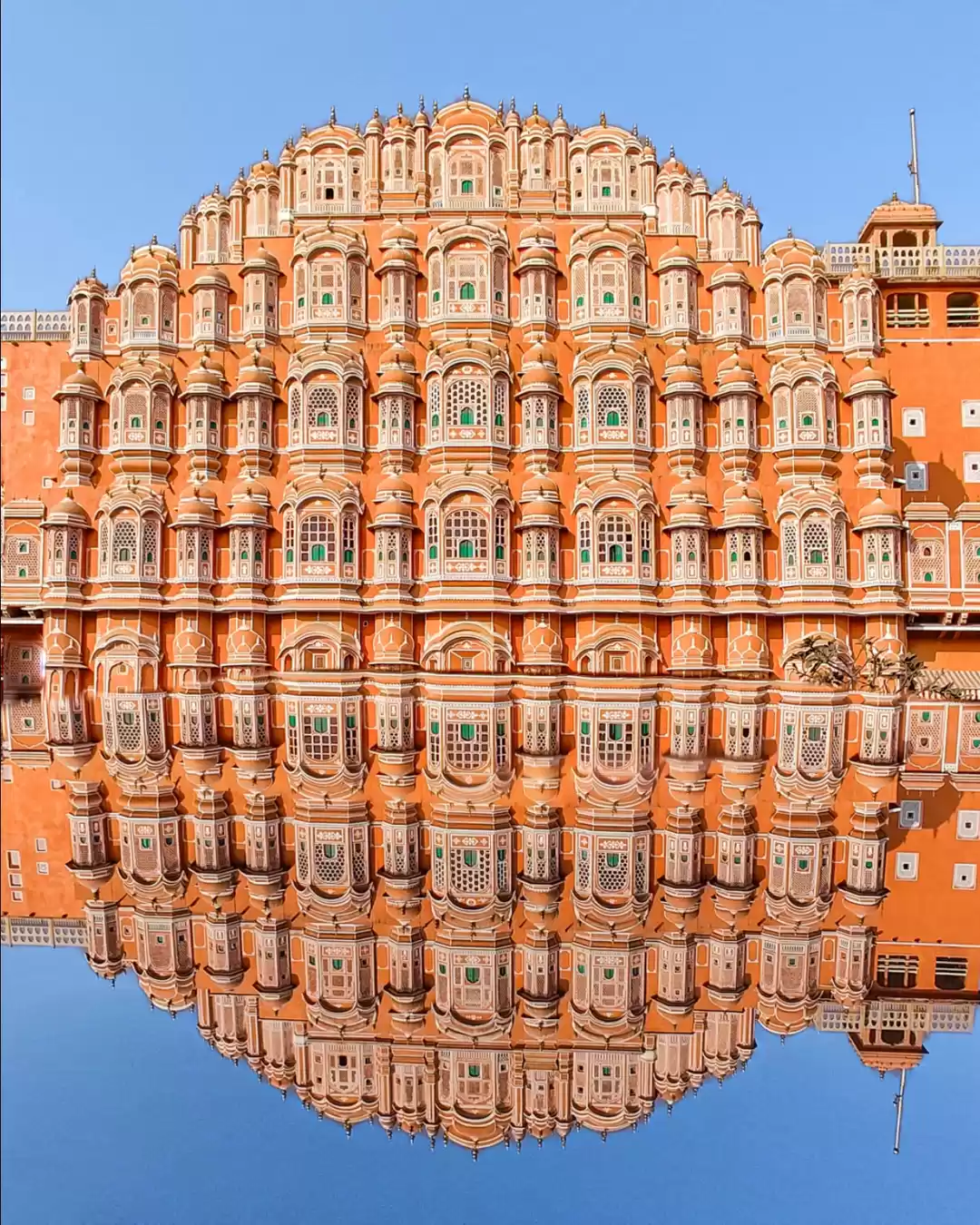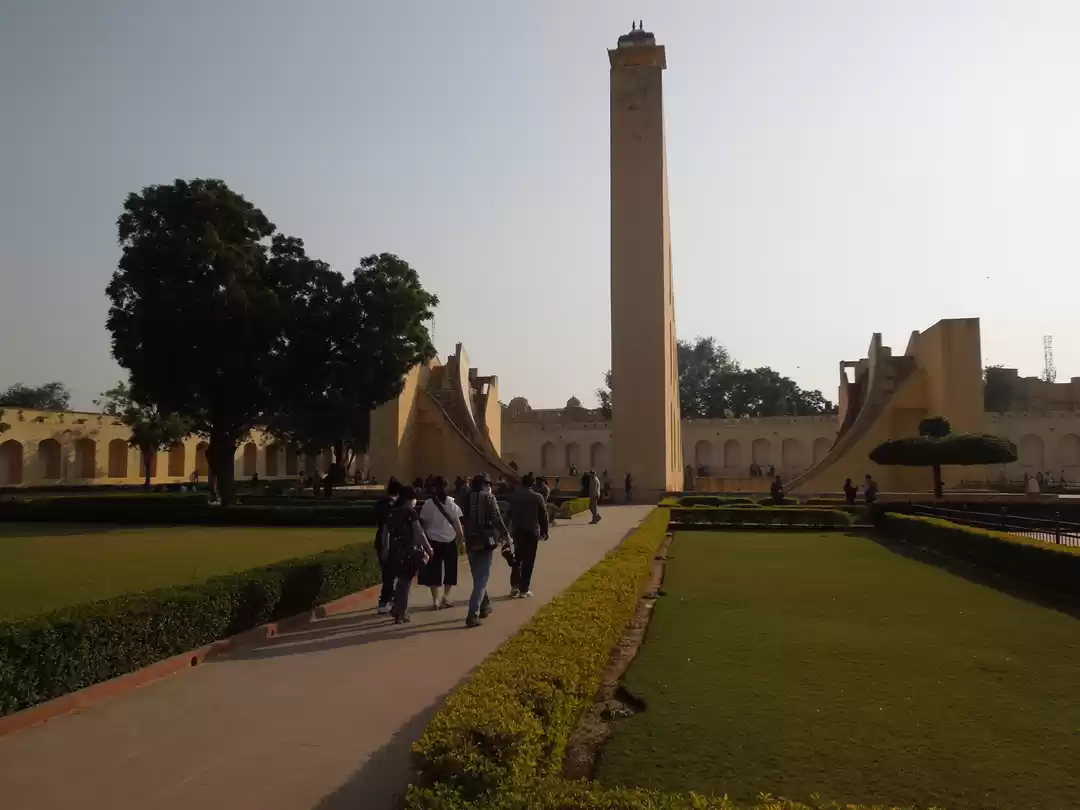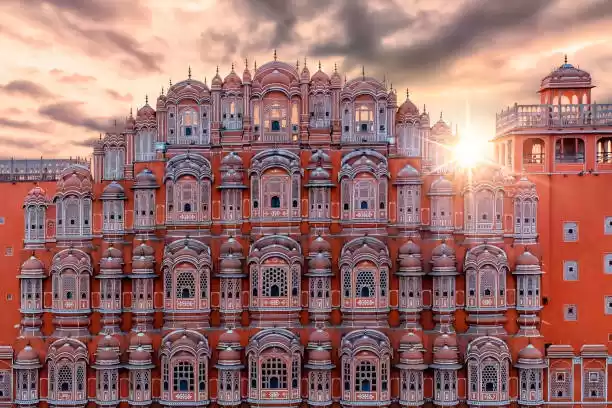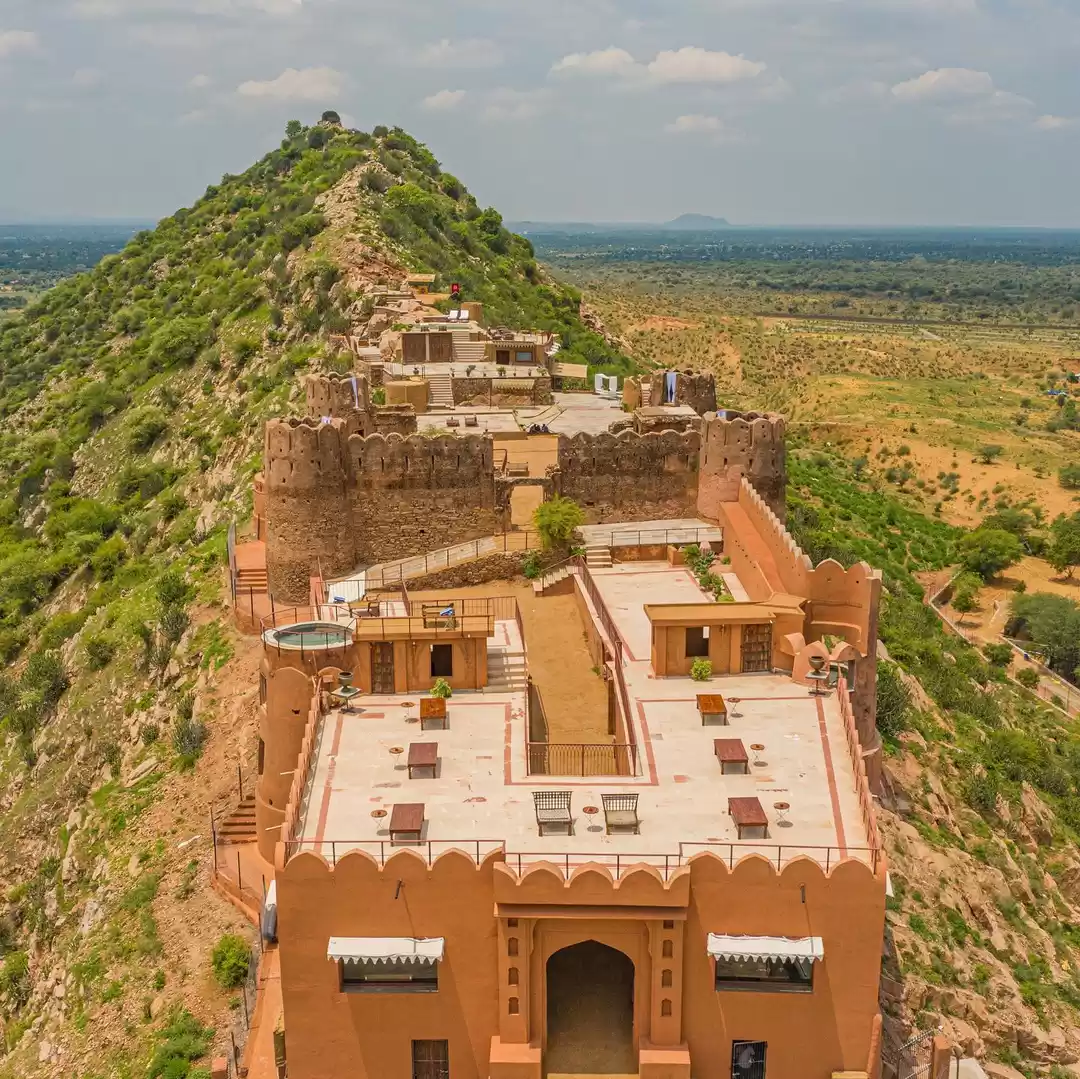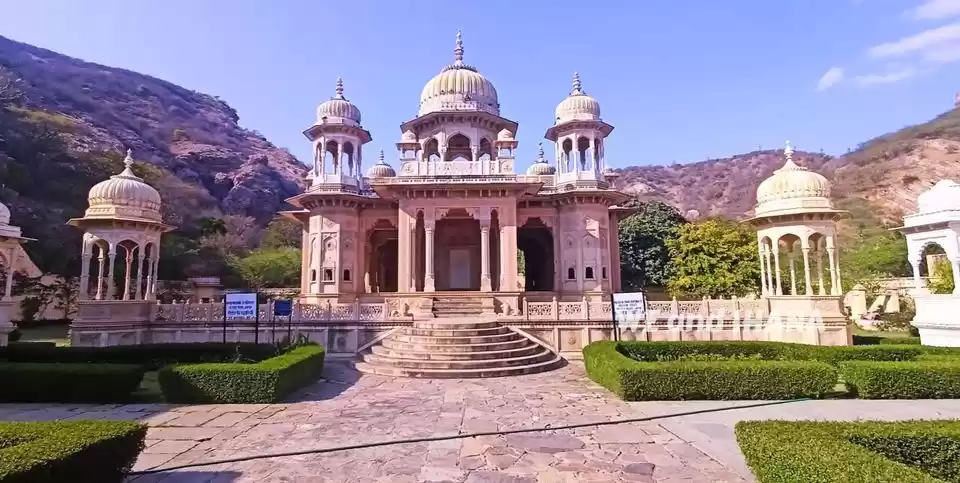If you are looking for a place that combines royal heritage, cultural legacy and architectural marvel, then City Palace Jaipur is the perfect destination for you. Located in the heart of the old city, City Palace Jaipur is one of the most famous tourist attractions in Jaipur and a must-visit for anyone who wants to experience the grandeur and glory of the Rajput kings and queens.
City Palace Jaipur was built by Maharaja Sawai Jai Singh II, the founder of Jaipur, between 1729 and 1732. It was the seat of the Maharaja of Jaipur and his successors for centuries. The palace complex covers one-seventh of the walled city and consists of several buildings, courtyards and gardens that showcase a blend of Mughal and Rajput architecture styles.
City Palace Jaipur is home to many attractions and highlights that will leave you spellbound. You can admire the exquisite paintings, frescoes, carvings and ornaments that adorn the walls and ceilings of the palace. You can explore the museums that display a collection of royal costumes, textiles, weapons, manuscripts and artefacts.
In this article, we will guide you through everything you need to know about City Palace Jaipur, including its history, architecture, attractions, things to do, best time to visit and tips for visiting. By the end of this article, you will be ready to plan your trip to this royal residence and discover its charm and splendour.
History of City Palace Jaipur
City Palace Jaipur has a rich and fascinating history that dates back to the 18th century. It was built by Maharaja Sawai Jai Singh II, who was a keen astronomer and a visionary ruler. He decided to shift his capital from Amber to Jaipur in 1727, as he wanted a more spacious and modern city. He commissioned Vidyadhar Bhattacharya, a Bengali architect, to design the new city according to the principles of Vastu Shastra (the ancient Indian science of architecture).
The construction of City Palace Jaipur began in 1729 and took three years to complete. The palace was designed as a fusion of Mughal and Rajput architecture styles, reflecting the cultural diversity and harmony of the region. The palace was also built with scientific precision and accuracy, as it aligned with the cardinal directions and incorporated astronomical instruments.

City Palace Jaipur was the residence of the Maharaja of Jaipur and his family for generations. It witnessed many historical events and incidents that shaped the destiny of Jaipur and Rajasthan. Some of them are:
In 1734, Maharaja Sawai Jai Singh II built Jantar Mantar (the largest stone observatory in the world) next to the palace.
In 1750, Maharaja Sawai Ishwari Singh added Chandra Mahal (the moon palace) to the palace complex.
In 1799, Maharaja Sawai Pratap Singh built Hawa Mahal (the palace of winds) near the palace.
In 1803, Maharaja Sawai Jagat Singh II added Mubarak Mahal (the auspicious palace) to the palace complex.
In 1818, Maharaja Sawai Jai Singh III signed a treaty with the British East India Company that made Jaipur a princely state under British protection.
In 1835, Maharaja Sawai Ram Singh II painted the entire city pink (the colour of hospitality) to welcome Prince Albert (the husband of Queen Victoria) who visited Jaipur.
In 1876, Maharaja Sawai Ram Singh II hosted King Edward VII (the son of Queen Victoria) who visited Jaipur.
In 1900, Maharaja Sawai Madho Singh II added Madho Niwas (the abode of Madho) to the palace complex.
In 1922, Maharaja Sawai Man Singh II ascended the throne at the age of 10 and became one of the most popular and progressive rulers of Jaipur.
In 1947, after India’s independence from British rule, Maharaja Sawai Man Singh II merged Jaipur with other princely states to form Rajasthan.
In 1956, after India’s reorganization of states, Jaipur became the capital of Rajasthan.
In 1970, Maharaja Sawai Bhawani Singh converted a part of the palace into a museum and opened it to the public.
In 2008, Maharaja Sawai Padmanabh Singh became the current titular head of the royal family of Jaipur at the age of 10.
Architecture of City Palace Jaipur
City Palace Jaipur is a masterpiece of architecture and design that reflects the artistic and cultural heritage of Jaipur and Rajasthan. The palace complex covers an area of 200,000 square metres and is surrounded by a high wall with seven gates. The palace is divided into two main parts: the outer part, which is open to the public, and the inner part, which is the private residence of the royal family.
The outer part of the palace consists of several buildings, courtyards and gardens that display a blend of Mughal and Rajput architecture styles. Some of the features and elements that characterize the palace are:

The pink hue: The palace is painted in pink, which is the traditional colour of hospitality and royalty in Jaipur. The pink colour also creates a contrast with the blue sky and the green hills that surround the city.
The jharokhas: The palace has many jharokhas, which are small windows or balconies that project from the walls. The jharokhas are decorated with intricate latticework and carvings and provide ventilation and natural light to the rooms. They also allow the royal ladies to observe the outside activities without being seen.
The peacock gate: The palace has four ornate gates that lead to the inner courtyard, each representing a different season and Hindu god. The most famous gate is the peacock gate, which represents autumn and Lord Vishnu. The gate is adorned with colourful peacock motifs and floral patterns.
The marble and sandstone: The palace is built with white marble and red sandstone, which are the most common building materials in Rajasthan. The marble and sandstone create a striking contrast and enhance the beauty and elegance of the palace.
The frescoes and paintings: The palace has many frescoes and paintings that depict scenes from Hindu mythology, history, nature and court life. The frescoes and paintings are done in various styles, such as Rajasthani, Mughal, Persian and European. They also use vibrant colours, such as blue, green, yellow and gold.
Attractions of City Palace Jaipur
City Palace Jaipur is home to many attractions and highlights that will leave you spellbound. You can admire the exquisite paintings, frescoes, carvings and ornaments that adorn the walls and ceilings of the palace. You can explore the museums that display a collection of royal costumes, textiles, weapons, manuscripts and artefacts. You can witness the beauty and elegance of the Chandra Mahal, Mubarak Mahal, Diwan-i-Aam, Diwan-i-Khas and other buildings within the palace. Here are some of the main attractions that you should not miss at City Palace Jaipur:

Chandra Mahal:
Chandra Mahal (the moon palace) is the seven-storeyed palace that serves as the residence of the royal family. It was built by Maharaja Sawai Jai Singh II in 1750 and later extended by his successors. It is one of the most impressive buildings in the palace complex, with its elaborate decorations, paintings and furnishings. Each floor has a different name and function, such as Sukh Niwas (the hall of rest), Rang Mandir (the hall of colour), Shobha Niwas (the hall of beauty), Chhavi Niwas (the hall of images) and Mukut Mandir (the crown temple). The top floor, called Sri Niwas (the abode of wealth), houses a museum that displays a collection of rare artefacts and paintings belonging to the royal family. The museum also offers a panoramic view of Jaipur city from its terrace.
Mubarak Mahal:
Mubarak Mahal (the auspicious palace) is the reception hall that displays a collection of royal costumes and textiles. It was built by Maharaja Sawai Madho Singh II in 1900 as a guest house for foreign dignitaries. It is one of the most striking buildings in the palace complex, with its Indo-Saracenic architecture style that combines elements from Islamic, Rajput and European designs. The hall has a high dome, arched windows, carved pillars and lattice screens. The museum showcases some of the finest examples of Rajasthani fabrics, such as bandhani (tie-dye), zari (gold embroidery), gota (silver lace) and block printing.
Govind Dev Ji Temple:
Govind Dev Ji Temple is the temple dedicated to Lord Krishna that is revered by devotees and visitors alike. It was built by Maharaja Sawai Jai Singh II in 1735 and later renovated by his successors. It is one of the most sacred and popular temples in Jaipur, with its simple and elegant architecture. The temple has a sanctum sanctorum, where the idol of Lord Krishna is installed. The idol is believed to be an exact replica of Lord Krishna’s form during his incarnation on earth. The temple also has a hall, where the devotees offer prayers and sing bhajans (devotional songs). The temple has a ritual of changing the clothes and ornaments of the idol seven times a day, according to the time and season. The temple also celebrates various festivals and occasions related to Lord Krishna, such as Janmashtami, Holi, Diwali, etc.
Things to Do at City Palace Jaipur
City Palace Jaipur offers a variety of activities and experiences that visitors can enjoy at the palace. You can explore the museums that showcase different aspects of royal history and culture or witness a spectacular show that narrates the story of Jaipur and its rulers with lights and music.
You can capture some stunning shots of the palace and its surroundings with your camera or smartphone. You can browse through some souvenir shops that sell handicrafts, jewellery, textiles, etc. made by local artisans. You can savour some delicious Rajasthani cuisine at some nearby restaurants or cafes. Here are some of the activities and experiences that you can enjoy at City Palace Jaipur:
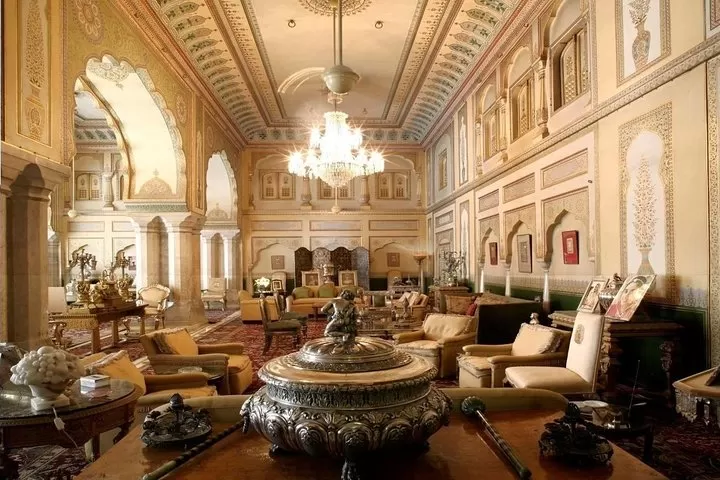
Museum tours:
Explore the various museums within the palace complex that showcase different aspects of royal history and culture. You can visit the museum in Chandra Mahal, which displays a collection of rare artefacts and paintings belonging to the royal family. You can also visit the museum in Mubarak Mahal, which exhibits a collection of royal costumes and textiles. You can also visit the museum in Diwan-i-Aam, which showcases a gallery of portraits and manuscripts. You can also visit the museum in Diwan-i-Khas, which exhibits a giant silver urn and crystal chandeliers. You can learn about the history, significance and stories behind each exhibit with the help of guides or audio guides.
Light and sound show:
Witness a spectacular show that narrates the story of Jaipur and its rulers with lights and music. The show is held every evening at the palace complex and lasts for about an hour. The show uses advanced technology and special effects to create a mesmerizing visual and auditory experience. The show covers various aspects of Jaipur’s history, such as its foundation, its battles, its culture, its festivals, etc. The show also features some of the famous personalities of Jaipur, such as Maharaja Sawai Jai Singh II, Maharaja Sawai Pratap Singh, Maharaja Sawai Man Singh II, etc. The show is available in both Hindi and English languages.
Photography:
Capture some stunning shots of the palace and its surroundings with your camera or smartphone. The palace offers many opportunities for photography, as it has many beautiful buildings, courtyards, gardens and features that reflect its royal charm and splendour. You can take photos of the palace from different angles and perspectives, such as from the outside, from the inside, from the terrace, etc.
Shopping: Browse through some souvenir shops that sell handicrafts, jewellery, textiles, etc. made by local artisans. The palace has a few souvenir shops within its premises, where you can buy some items that reflect the culture and heritage of Jaipur and Rajasthan. You can also visit some nearby markets, such as Johari Bazaar, Bapu Bazaar, Tripolia Bazaar, etc. where you can find a variety of products, such as puppets, pottery, carpets, quilts, etc. You can also bargain with the vendors and get some good deals on your purchases.
Dining: Savour some delicious Rajasthani cuisine at some nearby restaurants or cafes. The palace has a few restaurants and cafes within its premises, where you can enjoy some snacks and beverages. You can also visit some nearby restaurants or cafes, such as Laxmi Mishthan Bhandar, Rawat Mishthan Bhandar, Chokhi Dhani, etc. where you can taste some of the famous dishes of Jaipur and Rajasthan, such as dal baati churma, ghevar, pyaaz kachori, laal maas, etc. You can also try some of the street food items, such as gol gappa, kachori chaat, kulfi falooda, etc.
Best Time to Visit City Palace Jaipur
The best time to visit City Palace Jaipur is between November and March, when the weather is pleasant and comfortable for sightseeing. The temperature during this time ranges from 15°C to 25°C and the humidity is low. This is also the peak tourist season in Jaipur, as many festivals and events are celebrated during this time, such as Diwali, Pushkar Fair, Jaipur Literature Festival, etc.

However, there are some pros and cons of visiting City Palace Jaipur during different seasons or months. Here are some of them:
Summer (April to June):
This is the hottest season in Jaipur, when the temperature can soar up to 45°C and the humidity is high. This is not a suitable time to visit City Palace Jaipur, as it can be very uncomfortable and exhausting to explore the palace in the scorching heat. However, this is also the off-season in Jaipur, when the crowd is less and the prices are lower. You can also get some discounts on hotels and flights during this time.
Monsoon (July to September):
This is the rainy season in Jaipur, when the temperature drops to around 30°C and the humidity is moderate. This is a good time to visit City Palace Jaipur, as it can be refreshing and soothing to see the palace in the rain. However, this is also a risky time to visit City Palace Jaipur, as it can be affected by heavy rainfall and thunderstorms. You may also face some problems in transportation and communication during this time.
Winter (October to March):
This is the best season to visit City Palace Jaipur, as mentioned above. However, this is also the most expensive season to visit City Palace Jaipur, as the demand is high and the supply is low. You may have to pay more for hotels and flights during this time. You may also have to face some crowd and rush at the palace during this time.
Tips for Visiting City Palace Jaipur
Here are some useful tips and advice for visiting City Palace Jaipur that will make your visit smooth and enjoyable:
Dress appropriately: Wear comfortable clothes and shoes that are suitable for walking and exploring the palace. Avoid wearing revealing or offensive clothes that may hurt the sentiments of the locals or the royal family. Also carry a scarf or a shawl that you can use to cover your head or shoulders if required.
Follow the etiquette: Respect the rules and regulations of the palace and its museums. Do not touch or damage any of the exhibits or displays. Do not litter or spit inside or outside the palace. Do not smoke or drink inside or outside the palace. Do not make noise or disturb other visitors or staff members.
Check the security: Be aware of the security measures and procedures at the palace. Do not carry any prohibited items or weapons inside or outside the palace. Do not take any photos or videos where it is not allowed. Do not enter any restricted areas or rooms without permission.
Avail the facilities: Make use of the facilities and amenities available at or near the palace. There are parking spaces for vehicles near the palace gates. There are toilets and drinking water facilities inside the palace complex. There are guides and audio guides available for hire at the ticket counter or online. There are restaurants and cafes inside or near the palace complex where you can eat or drink.
You may also like to read: City Palace - Living Palace of Jaipur
Visit nearby attractions
After exploring City Palace Jaipur, you can also visit some nearby attractions or places that are worth seeing. Some of them are:

Jantar Mantar:
Jantar Mantar is the largest stone observatory in the world, built by Maharaja Sawai Jai Singh II in 1734. It has 19 astronomical instruments that measure time, distance, altitude, etc. It is a UNESCO World Heritage Site and a must-see for science and history lovers.

Hawa Mahal:
Hawa Mahal is the palace of winds, built by Maharaja Sawai Pratap Singh in 1799. It has 953 small windows or jharokhas that allow the breeze to enter the palace and keep it cool. It is one of the most iconic landmarks of Jaipur and a great spot for photography.
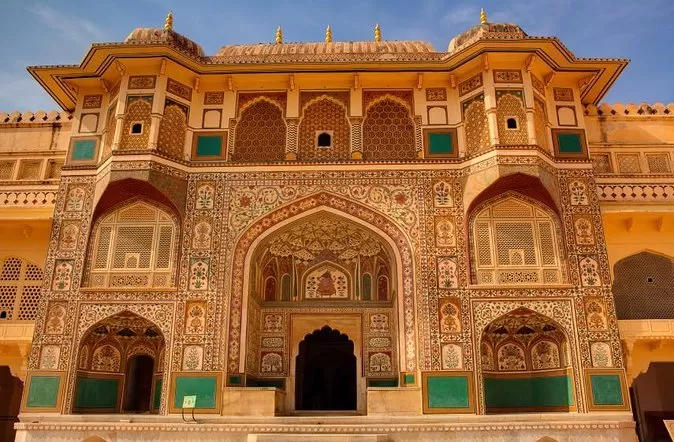
Amer Fort:
Amer Fort is the majestic fort that overlooks the city of Jaipur, built by Raja Man Singh I in 1592. It has many palaces, gardens, temples and halls that showcase the splendour and sophistication of the Rajput rulers. It is also a UNESCO World Heritage Site and a popular destination for elephant rides.
City Palace Jaipur is a royal residence with a rich history and splendid architecture that will enchant you with its charm and beauty. It is one of the most famous tourist attractions in Jaipur and a must-visit for anyone who wants to experience the grandeur and glory of the Rajput kings and queens.
You may also like to read: CITY PALACE - The Home of Jaipur Royals.
Whether you are interested in history, culture, art or architecture, you will find something to admire and appreciate at City Palace Jaipur. So, what are you waiting for? Book your tickets now and plan your trip to this magnificent palace complex.







